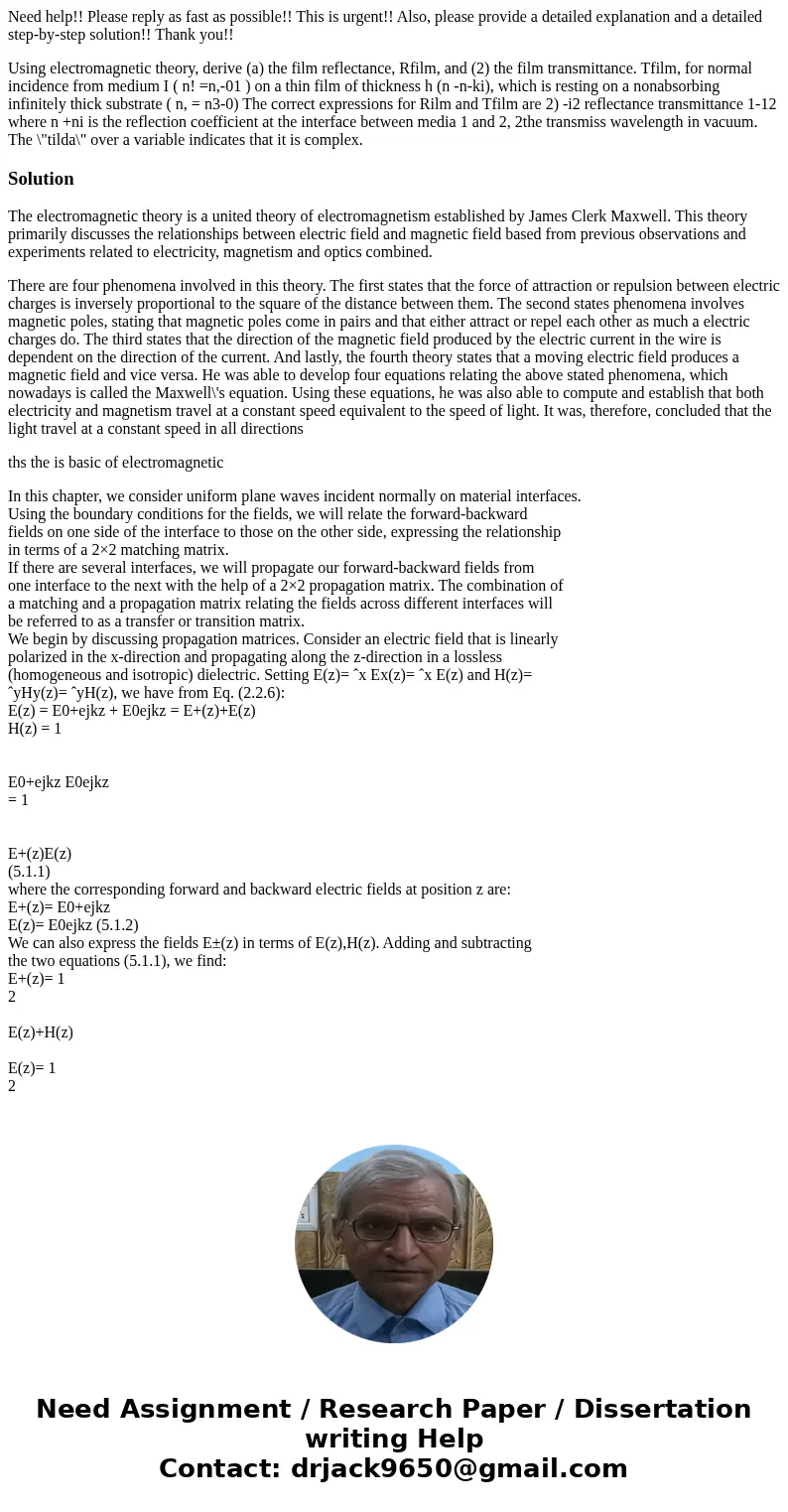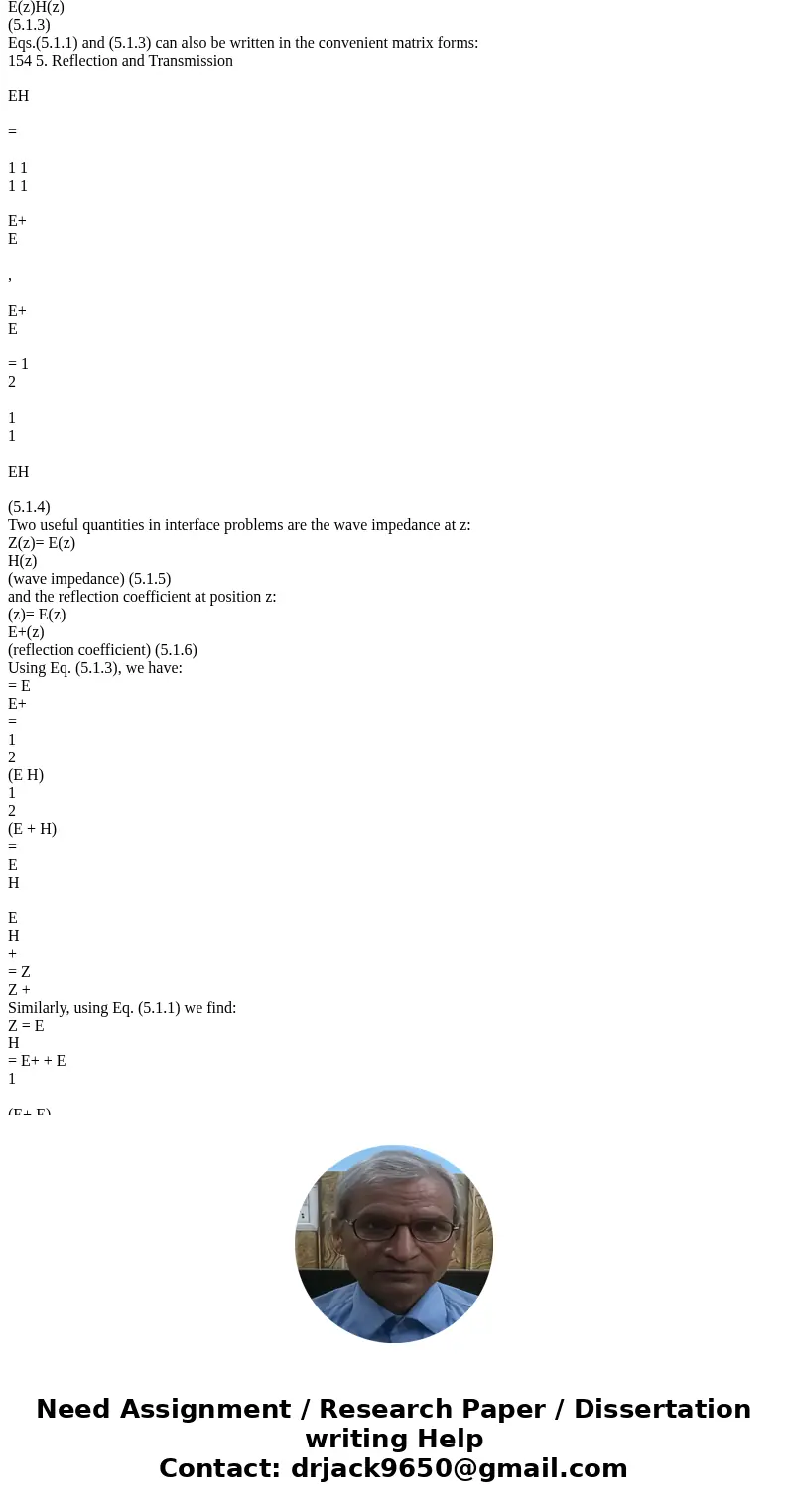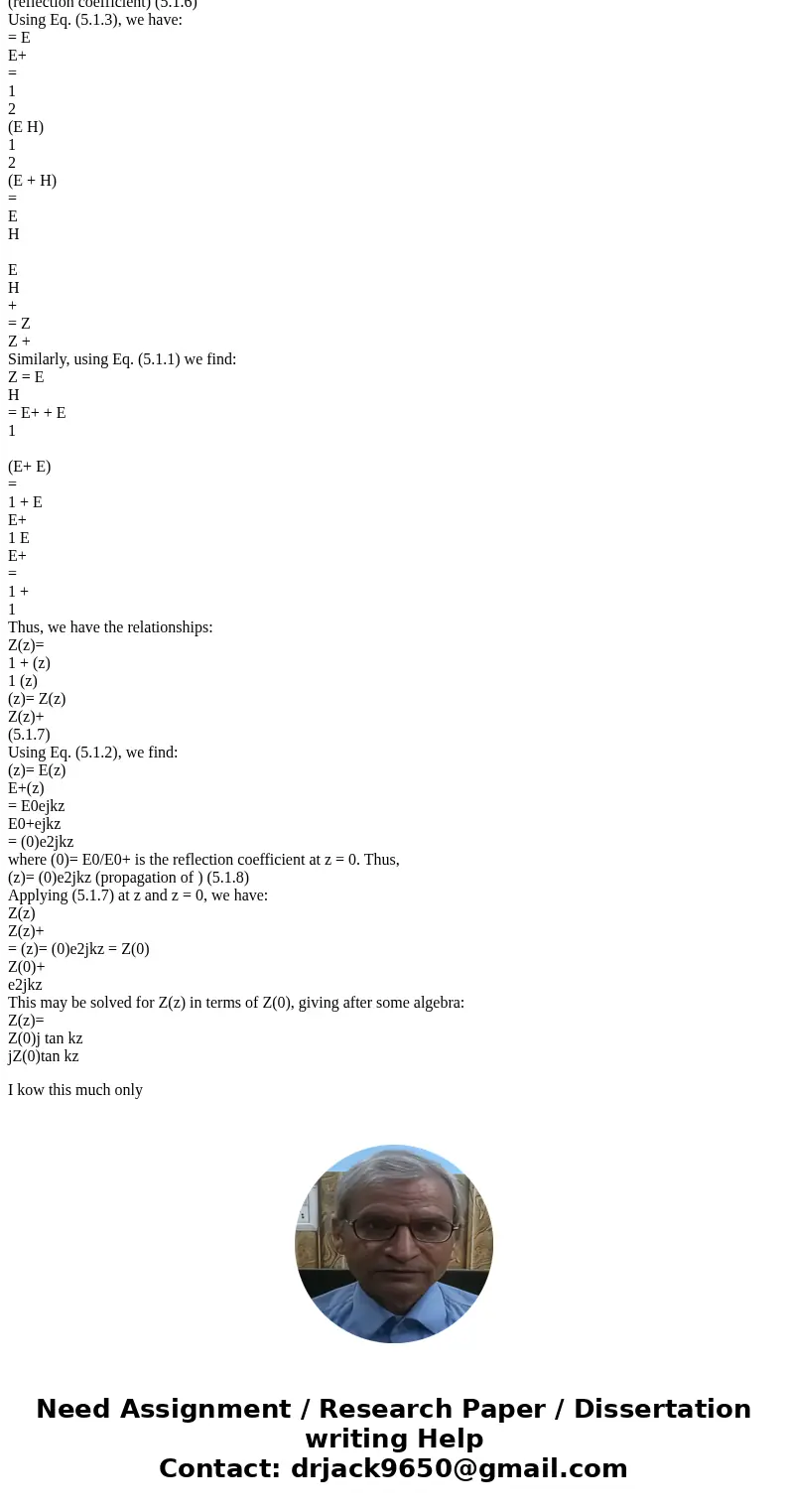Need help Please reply as fast as possible This is urgent Al
Need help!! Please reply as fast as possible!! This is urgent!! Also, please provide a detailed explanation and a detailed step-by-step solution!! Thank you!!
Using electromagnetic theory, derive (a) the film reflectance, Rfilm, and (2) the film transmittance. Tfilm, for normal incidence from medium I ( n! =n,-01 ) on a thin film of thickness h (n -n-ki), which is resting on a nonabsorbing infinitely thick substrate ( n, = n3-0) The correct expressions for Rilm and Tfilm are 2) -i2 reflectance transmittance 1-12 where n +ni is the reflection coefficient at the interface between media 1 and 2, 2the transmiss wavelength in vacuum. The \"tilda\" over a variable indicates that it is complex.Solution
The electromagnetic theory is a united theory of electromagnetism established by James Clerk Maxwell. This theory primarily discusses the relationships between electric field and magnetic field based from previous observations and experiments related to electricity, magnetism and optics combined.
There are four phenomena involved in this theory. The first states that the force of attraction or repulsion between electric charges is inversely proportional to the square of the distance between them. The second states phenomena involves magnetic poles, stating that magnetic poles come in pairs and that either attract or repel each other as much a electric charges do. The third states that the direction of the magnetic field produced by the electric current in the wire is dependent on the direction of the current. And lastly, the fourth theory states that a moving electric field produces a magnetic field and vice versa. He was able to develop four equations relating the above stated phenomena, which nowadays is called the Maxwell\'s equation. Using these equations, he was also able to compute and establish that both electricity and magnetism travel at a constant speed equivalent to the speed of light. It was, therefore, concluded that the light travel at a constant speed in all directions
ths the is basic of electromagnetic
In this chapter, we consider uniform plane waves incident normally on material interfaces.
Using the boundary conditions for the fields, we will relate the forward-backward
fields on one side of the interface to those on the other side, expressing the relationship
in terms of a 2×2 matching matrix.
If there are several interfaces, we will propagate our forward-backward fields from
one interface to the next with the help of a 2×2 propagation matrix. The combination of
a matching and a propagation matrix relating the fields across different interfaces will
be referred to as a transfer or transition matrix.
We begin by discussing propagation matrices. Consider an electric field that is linearly
polarized in the x-direction and propagating along the z-direction in a lossless
(homogeneous and isotropic) dielectric. Setting E(z)= ˆx Ex(z)= ˆx E(z) and H(z)=
ˆyHy(z)= ˆyH(z), we have from Eq. (2.2.6):
E(z) = E0+ejkz + E0ejkz = E+(z)+E(z)
H(z) = 1
E0+ejkz E0ejkz
= 1
E+(z)E(z)
(5.1.1)
where the corresponding forward and backward electric fields at position z are:
E+(z)= E0+ejkz
E(z)= E0ejkz (5.1.2)
We can also express the fields E±(z) in terms of E(z),H(z). Adding and subtracting
the two equations (5.1.1), we find:
E+(z)= 1
2
E(z)+H(z)
E(z)= 1
2
E(z)H(z)
(5.1.3)
Eqs.(5.1.1) and (5.1.3) can also be written in the convenient matrix forms:
154 5. Reflection and Transmission
EH
=
1 1
1 1
E+
E
,
E+
E
= 1
2
1
1
EH
(5.1.4)
Two useful quantities in interface problems are the wave impedance at z:
Z(z)= E(z)
H(z)
(wave impedance) (5.1.5)
and the reflection coefficient at position z:
(z)= E(z)
E+(z)
(reflection coefficient) (5.1.6)
Using Eq. (5.1.3), we have:
= E
E+
=
1
2
(E H)
1
2
(E + H)
=
E
H
E
H
+
= Z
Z +
Similarly, using Eq. (5.1.1) we find:
Z = E
H
= E+ + E
1
(E+ E)
=
1 + E
E+
1 E
E+
=
1 +
1
Thus, we have the relationships:
Z(z)=
1 + (z)
1 (z)
(z)= Z(z)
Z(z)+
(5.1.7)
Using Eq. (5.1.2), we find:
(z)= E(z)
E+(z)
= E0ejkz
E0+ejkz
= (0)e2jkz
where (0)= E0/E0+ is the reflection coefficient at z = 0. Thus,
(z)= (0)e2jkz (propagation of ) (5.1.8)
Applying (5.1.7) at z and z = 0, we have:
Z(z)
Z(z)+
= (z)= (0)e2jkz = Z(0)
Z(0)+
e2jkz
This may be solved for Z(z) in terms of Z(0), giving after some algebra:
Z(z)=
Z(0)j tan kz
jZ(0)tan kz
I kow this much only



 Homework Sourse
Homework Sourse